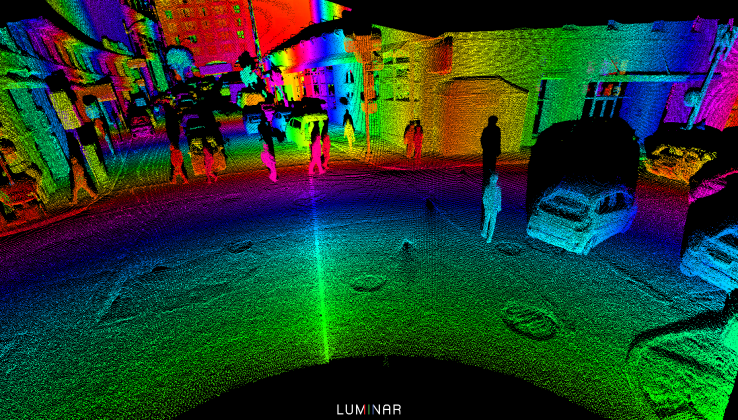
Cameras help autonomous vehicles read street signs and the color of traffic lights. But LiDARs, aka light detection and ranging systems, do the important work of sensing and helping cars avoid obstacles, whether that’s a fallen tree, drunk driver, or a child running out into the road.
Now, a startup called Luminar Technologies Inc., is unveiling a high-resolution LiDAR sensor that was five years in the making. The startup, which has raised $36 million in seed-stage funding so far, built its LiDAR systems from scratch. That means the company engineered its own: lasers, receivers, chips, packaging and more, rather than incorporating off-the-shelf components.
Investors in Luminar have included: Canvas Ventures, GVA Capital, and the Peter Thiel-backed 1517 Fund. According to Luminar’s CEO and cofounder Austin Russell, the company’s LiDARs give cars the ability to see obstacles ahead in much greater detail, and at much greater distances than any other systems on the market today.
Predecessors and competitors offering LiDAR for self-driving vehicles include Quanergy, Velodyne, and Alphabet-owned Waymo, among others. At twenty-two years old, Russell is confident his technology has them all beat in terms of performance.

At the age of two, Russell had already memorized the periodic tables, by twelve he wrote his first patent, and perhaps predictably he later dropped out of Stanford with a $100,000 Thiel Fellowship.
He said, “My role models were primarily in physics and engineering. I admire the classics like Newton, Tesla and Einstein. They all came up with a new way of thinking about a problem in order to be able to advance an entire field, rather than making incremental improvements to some specific technology.”
The problem most LiDAR makers are trying to solve, Russell points out, is one of affordability. Many auto-grade LiDARs still cost tens of thousands of dollars. Instead of simply making easier-to-manufacture, and cheaper versions of existing tech, Luminar sought to build a higher-performing sensor, even if it used exotic materials and operated at a different wavelength than industry standards.
Luminar invited TechCrunch to see a demonstration of its systems at San Francisco’s Pier 35, a terminal with a long straightaway. There, employees had arranged mannequins of different heights dressed in different colors, as well as life-sized decoy deers, car tires, and signs that…

